Full Stack Django Performance Monitoring
Get end-to-end visibility into your Django performance with application monitoring tools. Gain insightful metrics on performance bottlenecks with Python monitoring to optimize your application.
Get end-to-end visibility into your Django performance with application monitoring tools. Gain insightful metrics on performance bottlenecks with Python monitoring to optimize your application.
1. Install the agent using pip:
pip install atatus
2. Add "atatus.contrib.django" to INSTALLED_APPS in your settings.py:
INSTALLED_APPS = [
#...
'atatus.contrib.django'
]
3. Add license key and app name in your settings.py:
ATATUS = {
"APP_NAME": "Django App",
"LICENSE_KEY": "lic_apm_xxxxxxx"
}
4. Restart your server
1. Install the agent using pip:
pip install atatus[flask]
2. Initialize Atatus agent and add license key, app name in your main file.
from atatus.contrib.flask import Atatus
app = Flask(__name__)
# Add atatus agent to your app.
app.config['ATATUS'] = {
"APP_NAME": "Flask App",
"LICENSE_KEY": "lic_apm_xxxxxxx"
}
atatus = Atatus(app)
3. Restart your server
1. Go to your app directory and set your license key and app name to heroku config
heroku config:set ATATUS_APP_NAME="Flask App"
heroku config:set ATATUS_LICENSE_KEY="lic_apm_xxxxxx"
2. Add atatus.contrib to INSTALLED_APPS and set license key, app name in your settings.py.
INSTALLED_APPS = [
# ...
'atatus.contrib.django',
]
3. Add atatus to your project’s requirements.txt file.
# requirements.txt
atatus
4. Create a Procfile in your root directory and add the following line.
web: gunicorn yoursite.wsgi
5. Run the following commands to commit the changes.
git add .
git commit -m "Added Atatus Agent"
git push heroku master
heroku logs --tail
6. Access your app.
Atatus captures all requests to your Django applications without requiring you to change your source code. Get a clear picture of how all your methods, database statements and external requests are affecting your user's experience.
Automatically visualize end-to-end business transactions in your Django application. Monitor the amount and type of failed HTTP status codes and application crash with Django Monitoring. Analyze response time to identify Django performance issues and errors on each and every business transaction. Understand the impact of methods and database calls that affects your customer's experience.
Learn more
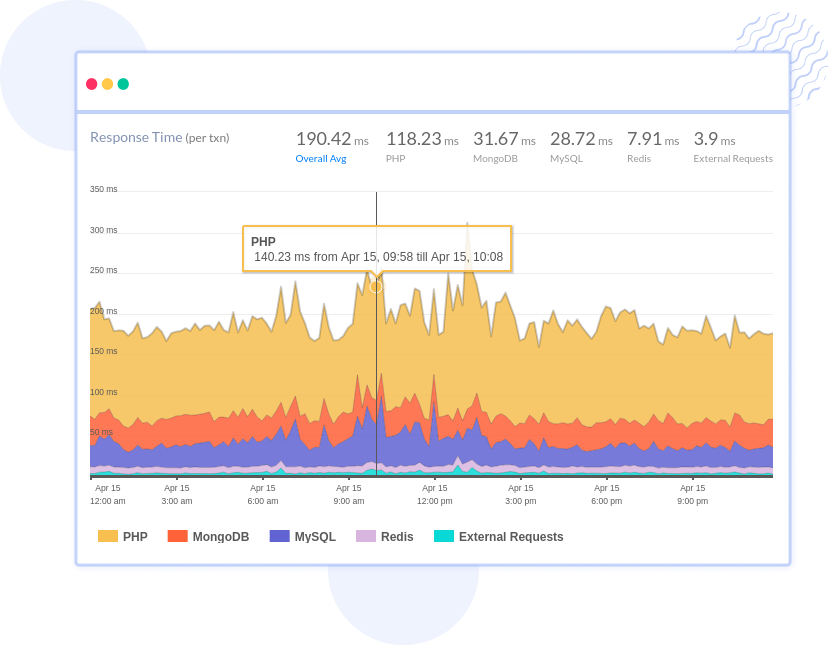
Examine all SQL and NoSQL queries used by your Django server. Identify slow database queries and optimize query performance with database monitoring proactively. Monitor and measure third party API calls' response times and REST API failure rates along with HTTP status codes. Slice and dice performance metrics in real time—based on host, version, release stage, URL and other attributes.
Learn more
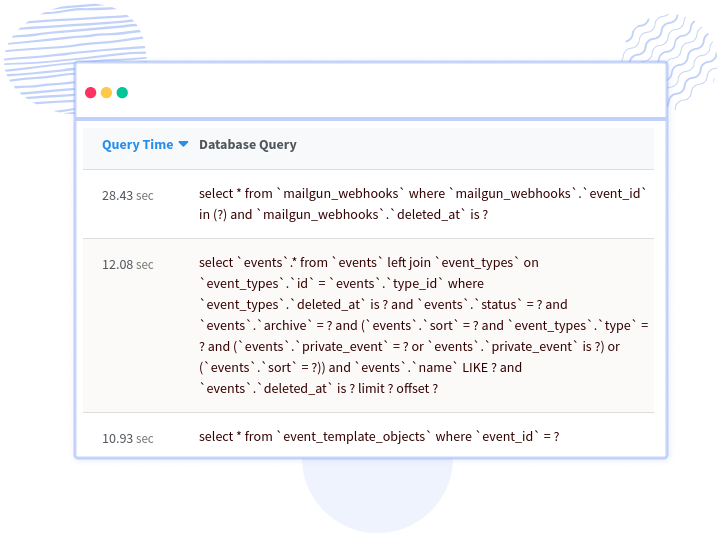
Every Django error is tracked using error tracking and captured with full stacktrace and exact line of source code is highlighted to make bug fixing easier. Get all the essential data such as class, message, URL, request agent, version etc to fix the Django exceptions and errors. Identify buggy API or third party services by investigating API failure rates and application crashes. Get alerts for application errors and exceptions via Email, Slack, PagerDuty, or using webhooks.
Learn more
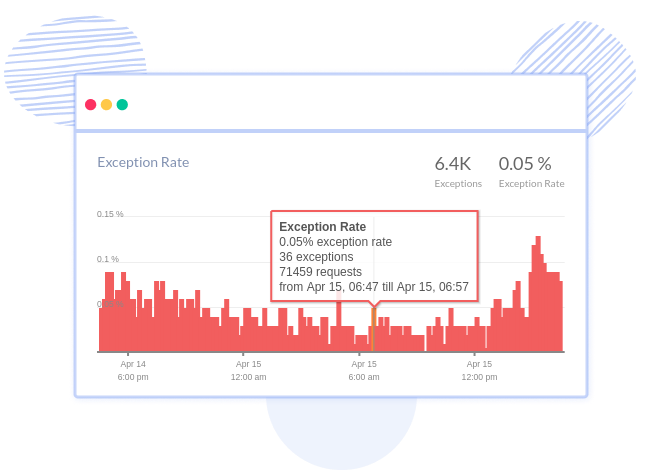
Quickly view the highest Django HTTP failures and get each request information along with custom data to identify the root cause of the failures. See the breakdown of the API failures based on HTTP Status Codes and the end-users having the highest impact.
Learn more
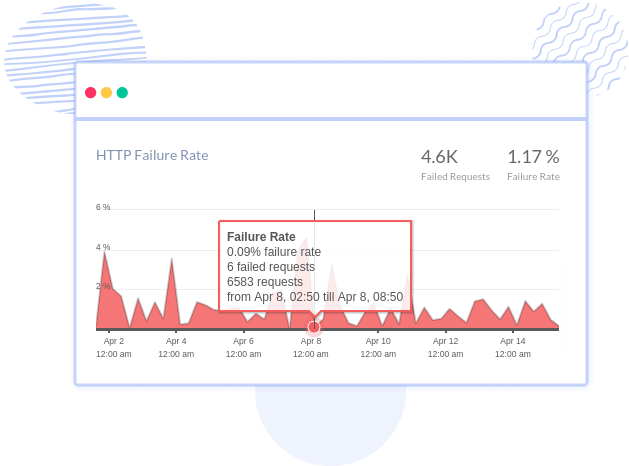
Break down slow Django requests by time spent in code blocks, database queries, external services, templates, message queues and much more. View logs, infrastructure metrics, VM metrics in context with the original request.
Learn more
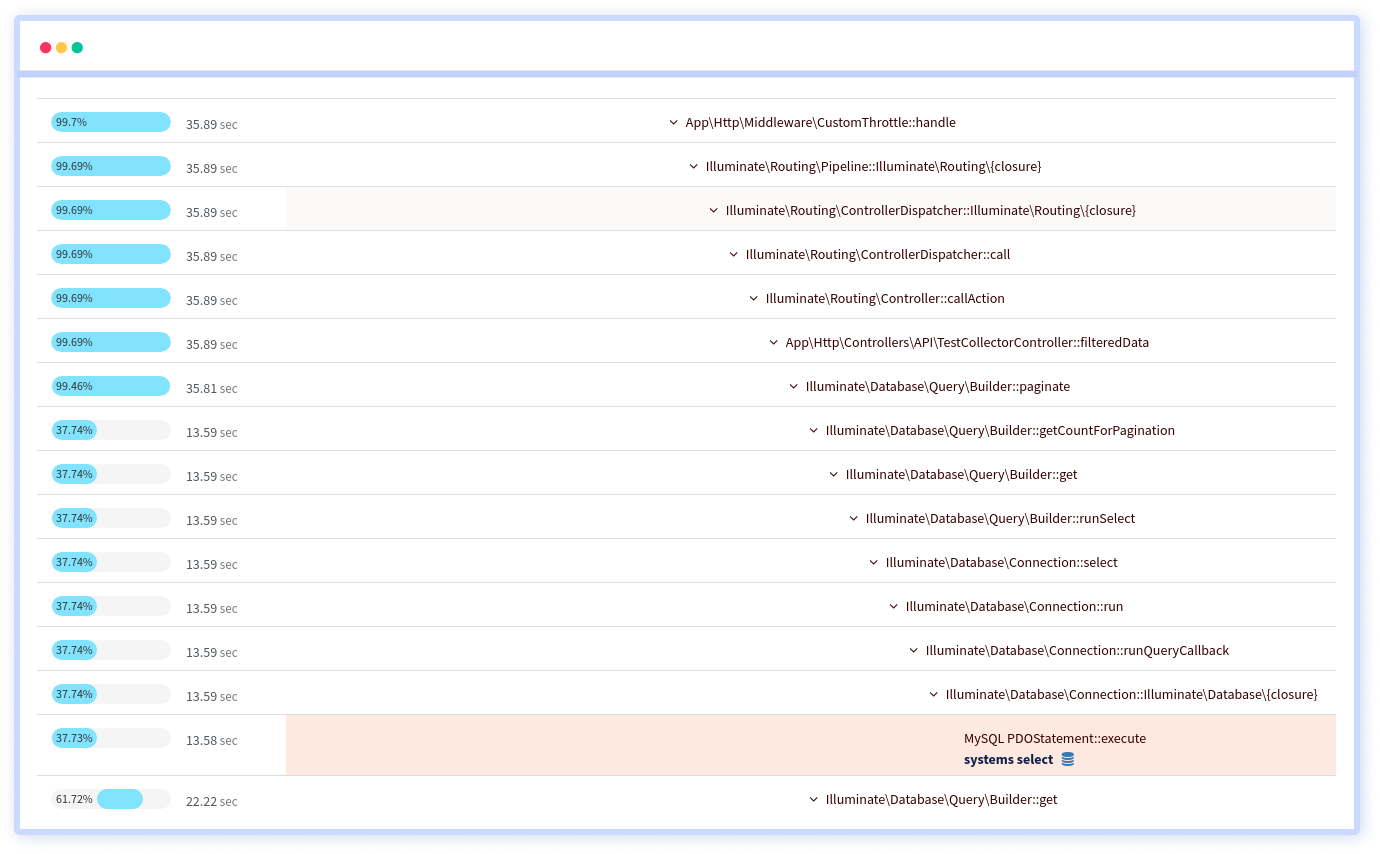
Try it free. No credit card required. Instant set-up.
Best APM Monitoring tool
— S Herman Kiefus, DevOps Admin, Compass
Monitor Flask, Django, Python and more. Gain insights into your Django performance, enhancing transaction flow and speeding up error resolution.
Visualize end-to-end traces across your stack, ensuring that you catch every Django error, performance issue, or bottleneck before it affects users.
Pinpoint and resolve slow database queries and eliminate performance bottlenecks impacting your Django application's responsiveness, leading to faster response times
Get alerted to potential library vulnerabilities, preventing security risks before they affect your customers or compliance.
Centralize all your Django logs in one place, and quickly identify the root cause of issues using advanced filtering, pattern detection, and log pipelines.
Set up and track custom metrics that align with your app's KPIs to ensure you're monitoring exactly what matters most for your success.
Explore request-level analysis, including stdout APM logs, to understand execution times, bottlenecks, and areas that need optimization.
Correlate your app’s Django APM metrics with server health to get a complete picture of your application’s performance and infrastructure dependencies.
Receive real-time alerts for Django app performance degradations and critical issues. Take immediate action to prevent downtime and optimize user experiences.
Django performance monitoring involves using various Django monitoring tools to track, analyze, and optimize the performance of a Django application. This includes measuring response times and identifying bottlenecks. Django performance monitoring includes measuring response time, database performance, error tracking, resource usage, request throughput, and application logs.
Application Performance Metrics
Database Metrics
Resource Usage Metrics
Network Metrics
To implement Django performance monitoring you need a Django application performance monitoring tools like Atatus. First, install the Atatus APM client in your Django project. Next, configure Atatus in your settings file. Then, set up the Django monitoring dashboard in Atatus to visualize metrics and Django network monitoring data. This will provide comprehensive insights into your application's performance.
Feel assured as we maintain rigorous security protocols, ensuring the safety of your data with every interaction



Avail Atatus features for 14 days free-trial. No credit card required. Instant set-up.